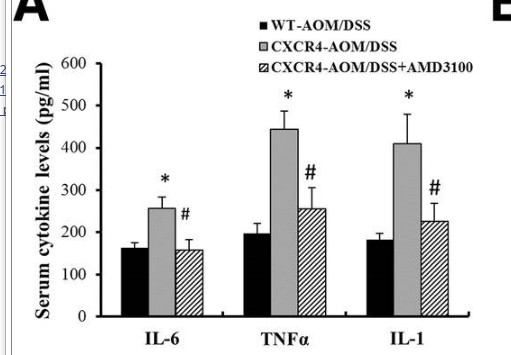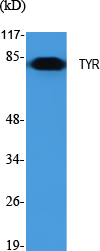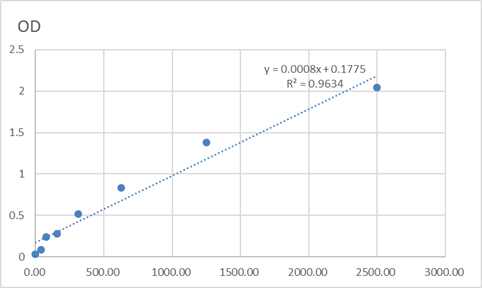Tyrosinase (ABT96R) rabbit mAb
- 货号:YM7227
- 应用:IHC; ELISA
- 种属:Human;Mouse;
- 简介:
- >>Tyrosine metabolism;>>Metabolic pathways;>>Melanogenesis
- 蛋白名称:
- ATN;CMM8;LB24 AB;LB24-AB;Monophenol monooxygenase;OCA1;OCA1A;OCAIA;Oculocutaneous albinism IA;SHEP3;SK29 AB;SK29-AB;Tumor rejection antigen AB;TYR;TYRO_HUMAN;tyrosinase (oculocutaneous albinism IA);Ty
- 免疫原:
- Synthesized peptide derived from human Tyrosinase AA range:250-350
- 特异性:
- This antibody detects endogenous levels of Tyrosinase
- 组成:
- PBS, 50% glycerol, 0.05% Proclin 300, 0.05%BSA
- 来源:
- Monoclonal, Rabbit IgG1, Kappa
- 稀释:
- IHC 1:100-500, ELISA 1:5000-20000
- 纯化工艺:
- Recombinant Expression and Affinity purified
- 储存:
- -15°C to -25°C/1 year(Do not lower than -25°C)
- 其他名称:
- ATN;CMM8;LB24 AB;LB24-AB;Monophenol monooxygenase;OCA1;OCA1A;OCAIA;Oculocutaneous albinism IA;SHEP3;SK29 AB;SK29-AB;Tumor rejection antigen AB;TYR;TYRO_HUMAN;tyrosinase (oculocutaneous albinism IA);Tyrosinase
- 背景:
- tyrosinase(TYR) Homo sapiens The enzyme encoded by this gene catalyzes the first 2 steps, and at least 1 subsequent step, in the conversion of tyrosine to melanin. The enzyme has both tyrosine hydroxylase and dopa oxidase catalytic activities, and requires copper for function. Mutations in this gene result in oculocutaneous albinism, and nonpathologic polymorphisms result in skin pigmentation variation. The human genome contains a pseudogene similar to the 3' half of this gene. [provided by RefSeq, Oct 2008],
- 功能:
- catalytic activity:L-tyrosine + L-dopa + O(2) = L-dopa + dopaquinone + H(2)O.,cofactor:Binds 2 copper ions per subunit.,disease:Defects in TYR are the cause of oculocutaneous albinism type I temperature-sensitive (OCA-ITS) [MIM:606952]. OCA-ITS patients have white axillary and scalp hair and pigmented arm and leg hair.,disease:Defects in TYR are the cause of oculocutaneous albinism type IA (OCA-IA) [MIM:203100]. OCA-I, also known as tyrosinase negative oculocutaneous albinism, is an autosomal recessive disorder characterized by absence of pigment in hair, skin and eyes. OCA-I is divided into 2 types: type IA, characterized by complete lack of tyrosinase activity due to production of an inactive enzyme, and type IB characterized by reduced activity of tyrosinase. OCA-IA patients presents with the life-long absence of melanin pigment after birth and manifest increased sensitivity to ultrav



